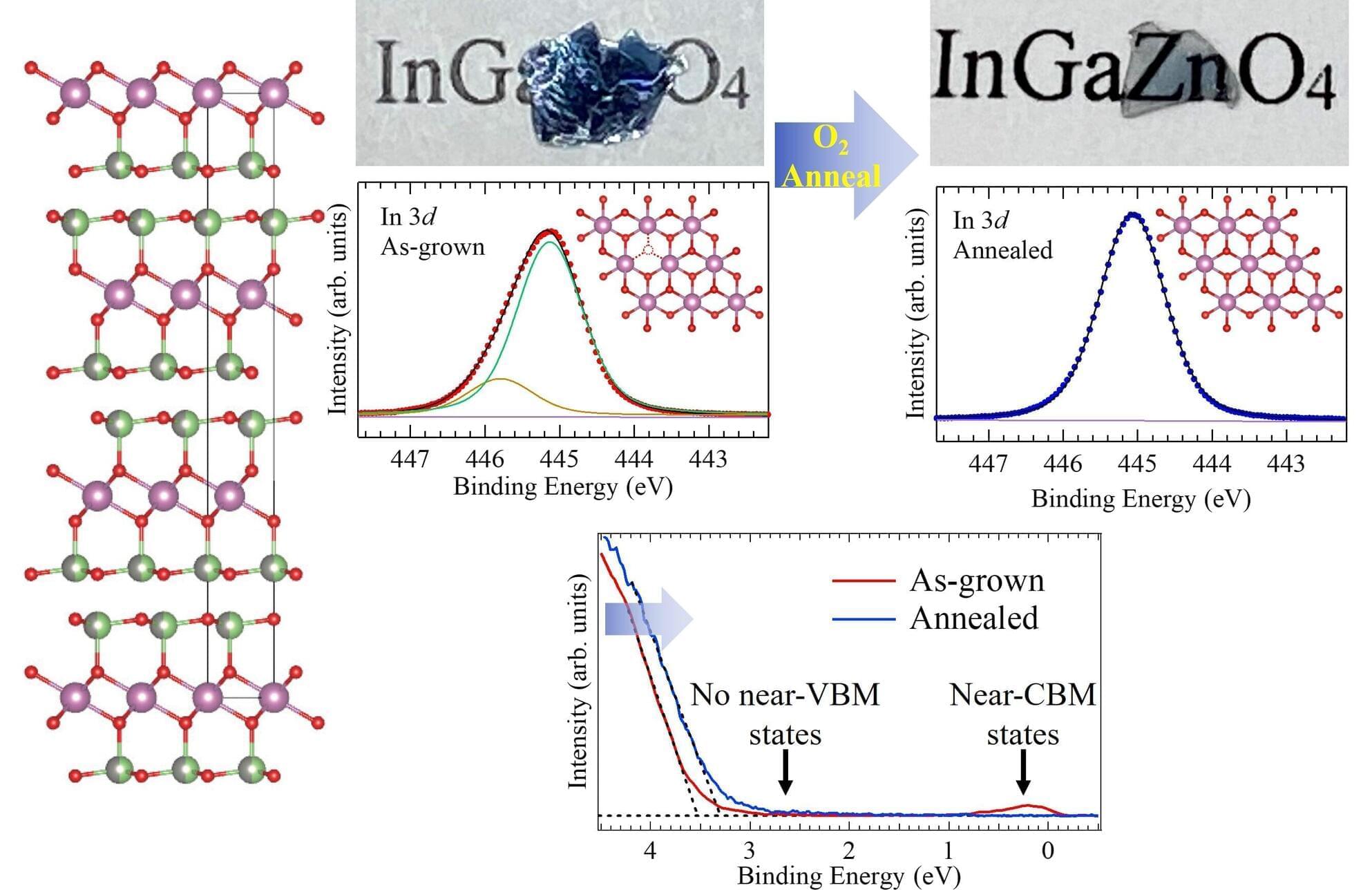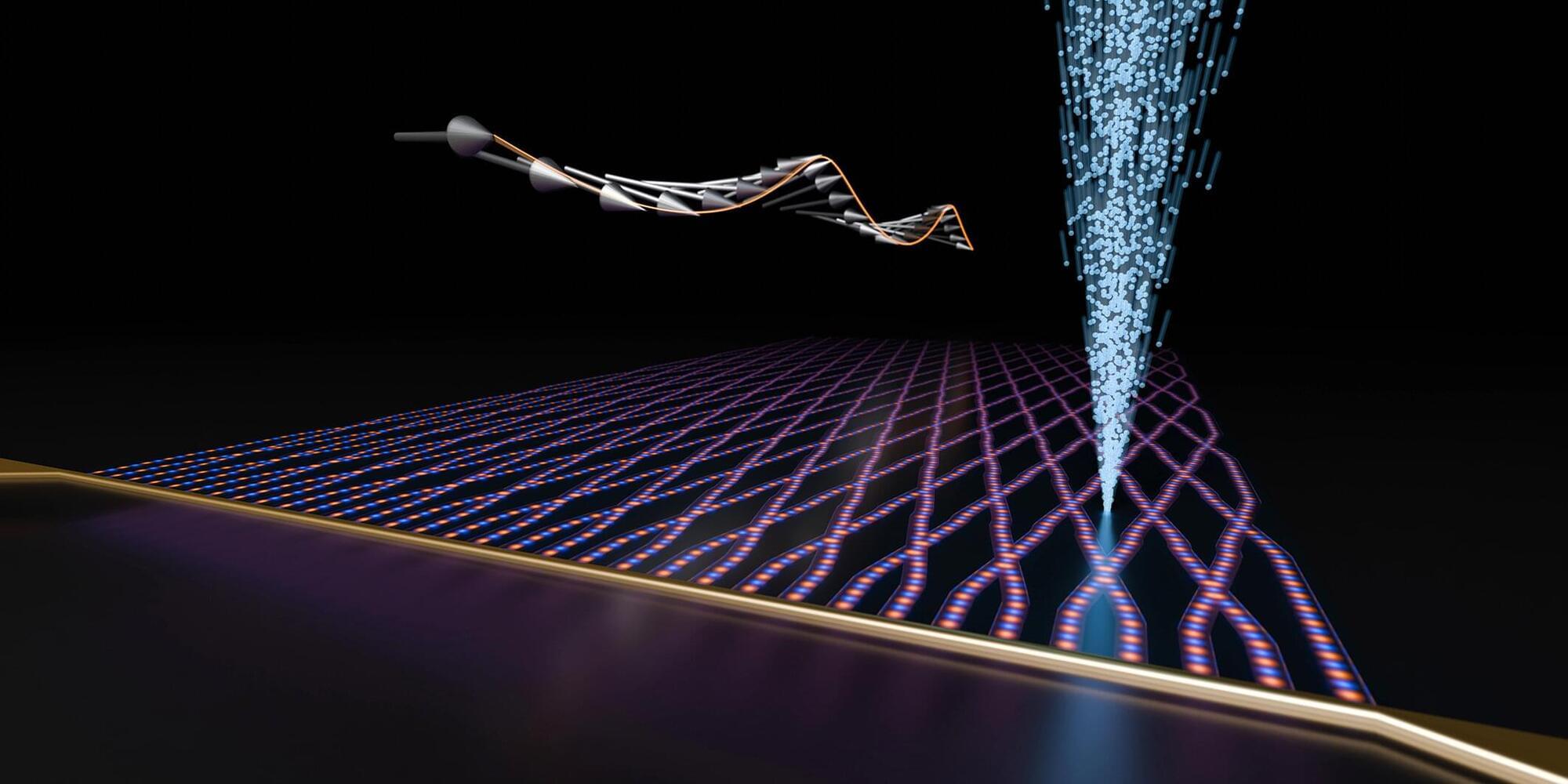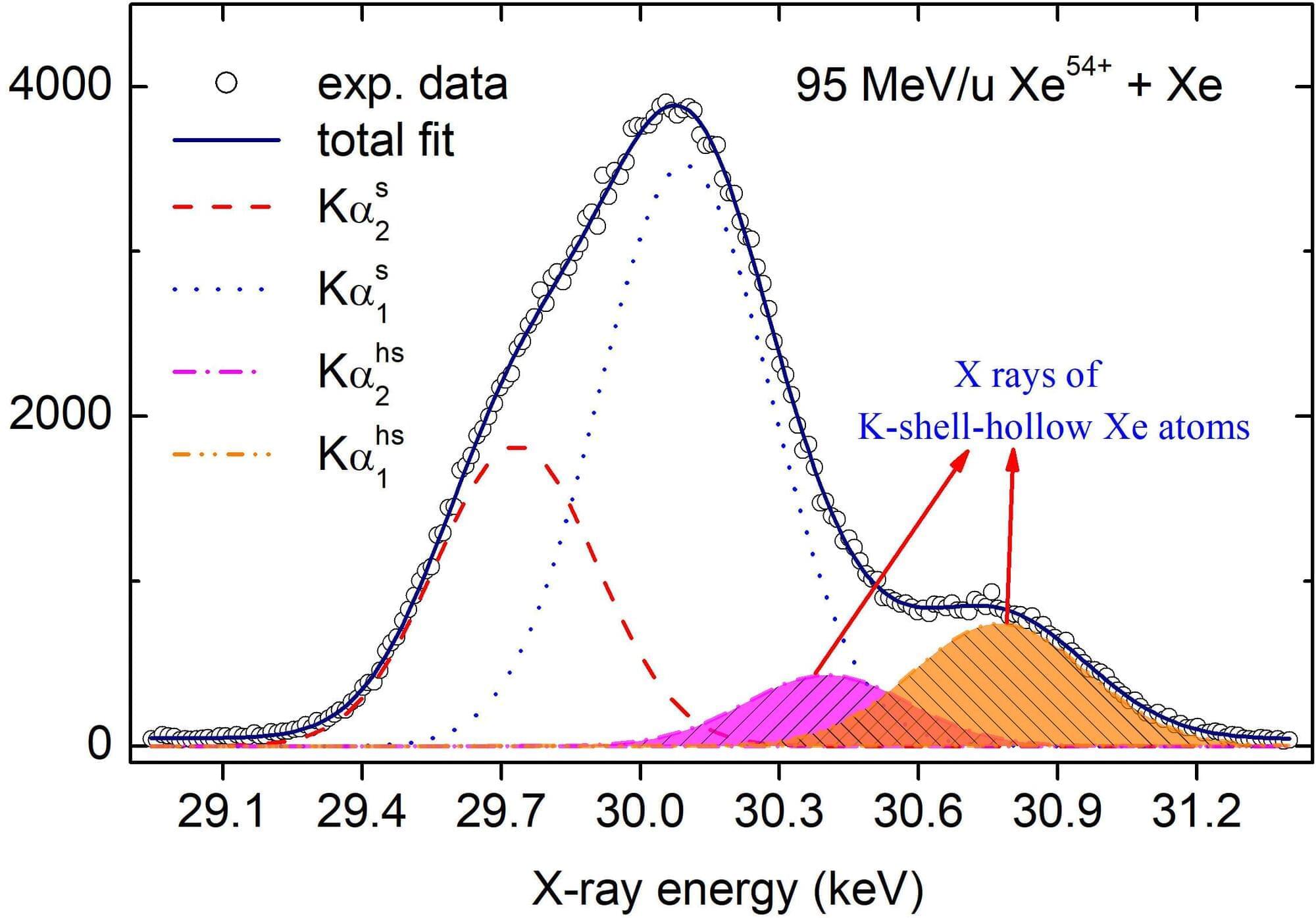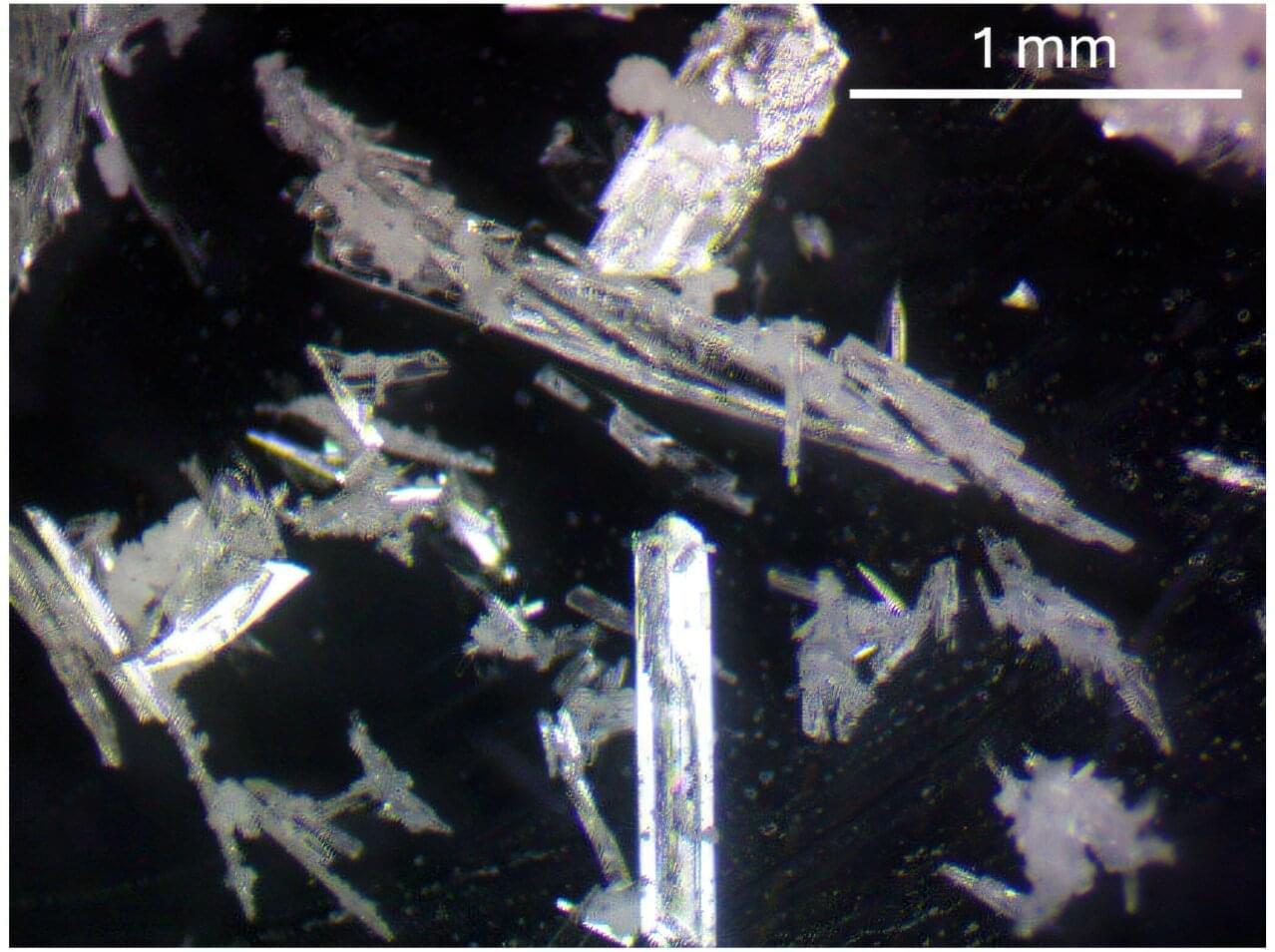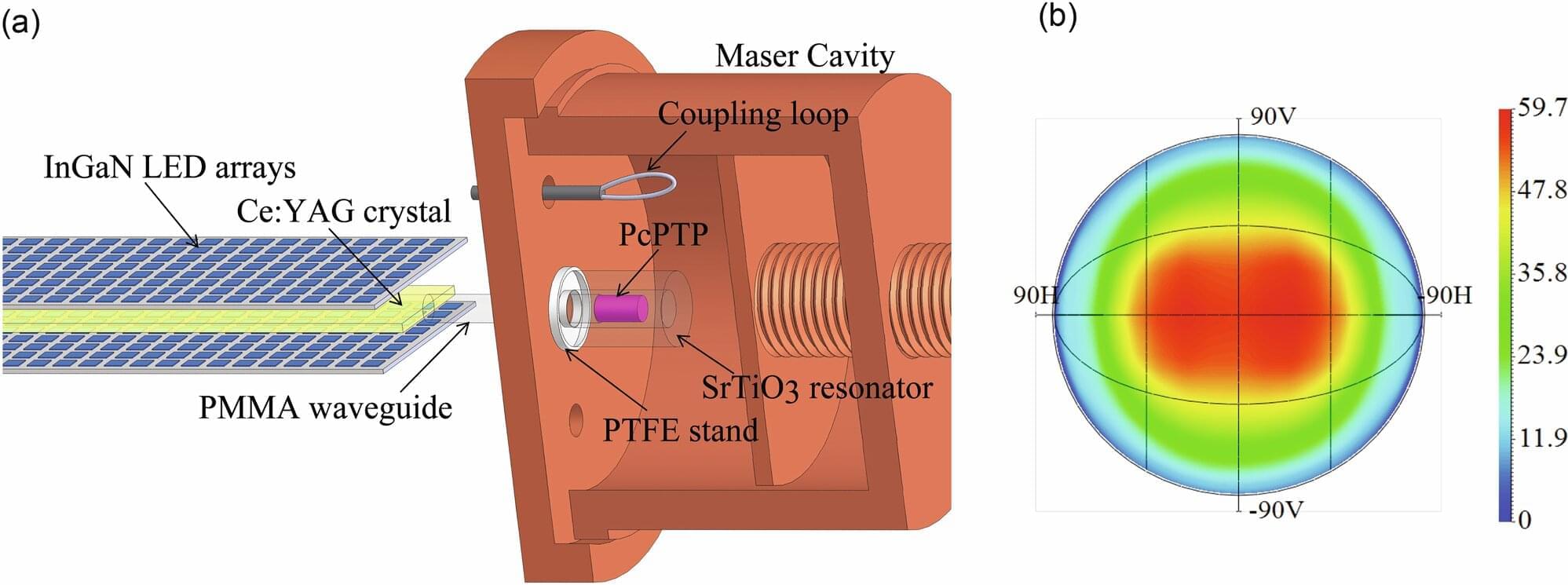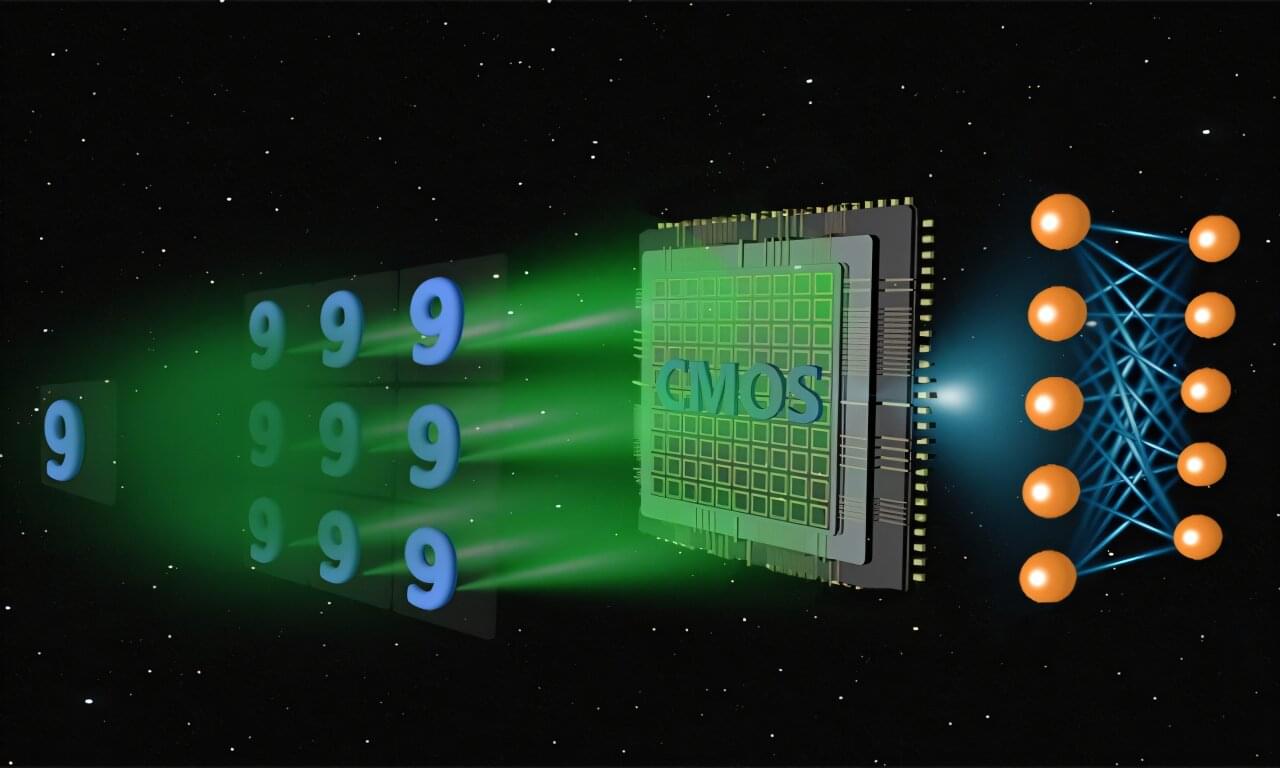Many displays found in smartphones and televisions rely on thin-film transistors (TFTs) made from indium gallium zinc oxide (IGZO) to control pixels. IGZO offers high transparency due to its large bandgap (the gap existing between the valence and conduction bands), high conductivity, and can operate even in an amorphous (non-crystalline) form, making it ideal for displays, flexible electronics, and solar cells.
However, IGZO-based devices face long-term stability issues, such as negative bias illumination stress, where prolonged exposure to light and electrical stress shifts the voltage required to activate pixels. These instabilities are believed to stem from structural imperfections, which create additional electronic states—known as subgap states—that trap charge carriers and disrupt current flow.
Until recently, most studies on subgap states focused on amorphous IGZO, as sufficiently large single-crystal IGZO (sc-IGZO) samples were not available for analysis. However, the disordered nature of amorphous IGZO has made it difficult to pinpoint the exact causes of electronic instability.
